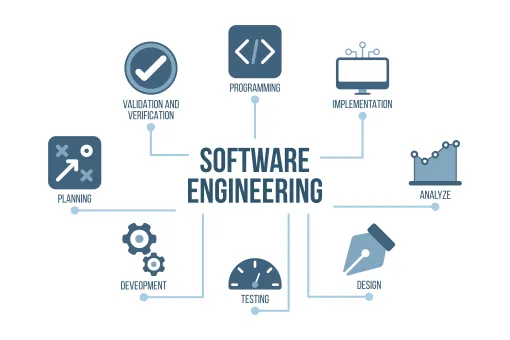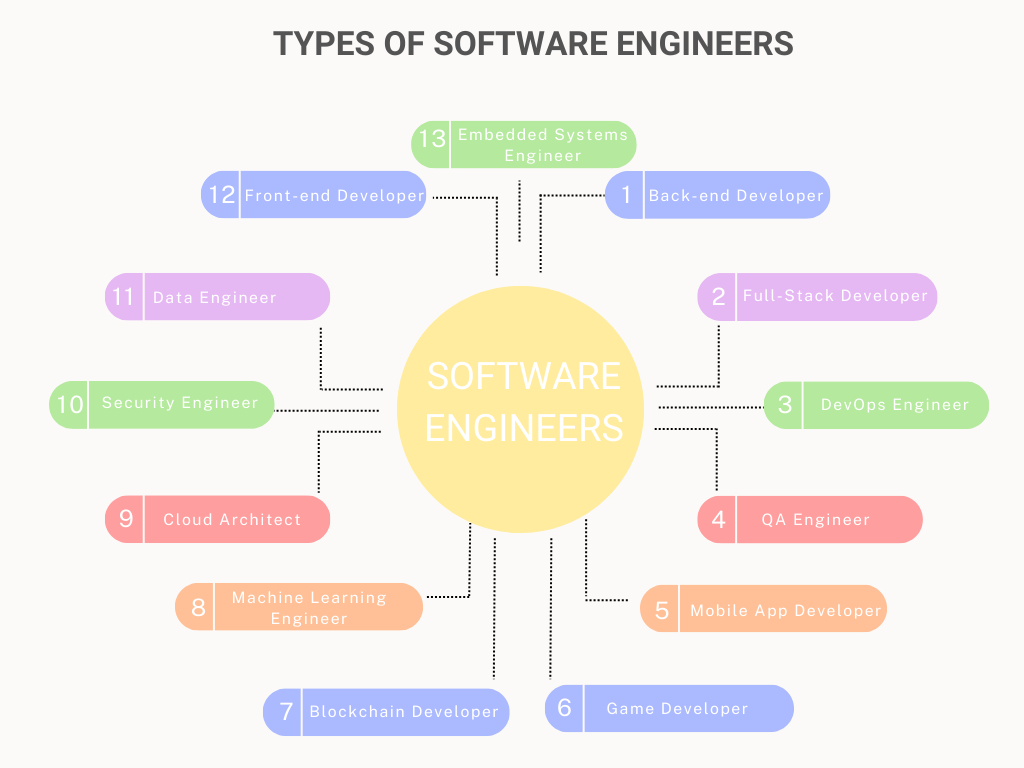
Introduction
Software engineering plays a vital role in driving technological advancement in an age where software is deeply embedded in every facet of our lives. It involves both the creative and technical aspects of designing, developing, testing, and maintaining software systems. Whether it’s a simple tool or a complex, mission-critical application, software engineering is the discipline that turns ideas into functional, dependable, and user-friendly software solutions.
Must Read:Understanding Data Analysis And It’s Importance
What Is Software Engineering?

Software Engineering is a field within computer science and engineering that focuses on the design, development, testing, and maintenance of software systems. It employs structured and methodical approaches to ensure that software products are reliable, efficient, and tailored to meet the needs of users and organizations. Software engineering covers a range of processes, principles, and methodologies aimed at producing high-quality software.
1. Requirements Analysis
The first stage of software engineering involves understanding the problem to be addressed. Software engineers collaborate with stakeholders to gather and analyze the necessary requirements.
2. Design
After clarifying the requirements, software engineers develop the architecture and structure of the software. This involves creating both high-level and detailed designs, defining data structures, and planning the overall system layout. A well-thought-out design is essential for scalability, maintainability, and performance.
3. Implementation
This is where the actual coding happens. Software engineers write the code in programming languages, transforming the design into a functional product. Adhering to best practices and coding standards ensures the code is clean, readable, and easy to maintain.
4. Testing
Quality assurance is a key component of software engineering. Engineers conduct various tests, including unit tests, integration tests, and user acceptance tests, to ensure the software functions as expected and meets the specifications. Any issues or bugs are identified and fixed during this stage.
5. Maintenance
Software development doesn’t end with deployment. After release, software engineers provide ongoing support and maintenance. This includes fixing issues, adding new features, and ensuring the software remains compatible with new technologies and evolving user needs.
Types of Software Engineers

1. Front-End Developer
– User Interface Design: Focuses on developing the visual elements of applications that users interact with directly.
– Responsive Design: Ensures that applications work seamlessly across various devices and screen sizes.
– Client-Side Scripting: Utilizes languages like HTML, CSS, and JavaScript to create dynamic and interactive web pages.
2. Back-End Developer
– Server-Side Logic: Implements server-side processes such as user authentication, authorization, database interactions, and core application logic.
– Database Management: Designs and manages databases, ensuring data security and integrity.
– API Development: Develops and manages APIs that enable communication between client-side applications and servers.
3. Full-Stack Engineer
– Versatility: Skilled in working on both the front end and back end of applications.
– Integration: Ensures smooth integration between client-side and server-side functionalities.
– Project Ownership: Oversees the complete development process from design to implementation.
4. Cloud Architect
– Cloud Infrastructure: Designs and manages scalable cloud environments.
– Migration Strategies: Plans and executes the migration of applications to cloud platforms.
– Security and Compliance: Ensures cloud solutions meet security and regulatory requirements.
5. QA Engineer
– Testing Frameworks: Develops and maintains automated testing frameworks to ensure software quality.
– Bug Tracking: Identifies, documents, and tracks software bugs.
– Performance Testing: Tests software performance in various scenarios to ensure reliability.
6. Software Development Engineer in Test (SDET)
– Automation Expertise: Builds automated tests to verify software functionality.
– Development Skills: Combines coding expertise with testing to create reliable test environments.
– Continuous Integration: Incorporates automated tests into CI/CD pipelines for ongoing quality assurance.
7. DevOps Engineer
– CI/CD Pipelines: Designs and maintains pipelines for continuous integration and delivery.
– Infrastructure as Code: Manages infrastructure through code using tools like Terraform and Ansible.
– Monitoring and Logging: Uses monitoring tools to ensure system performance and stability.
8. Data Engineer
– Data Pipelines: Develops and manages pipelines for processing and moving data.
– ETL Processes: Extracts, transforms, and loads data into storage systems.
– Big Data Tools: Utilizes
9. Android or iOS Mobile Developer
– Mobile App Development: Utilizes platforms like iOS and Android to develop applications specifically designed for mobile devices.
– Platform-Specific Knowledge: Understands the unique characteristics and guidelines associated with iOS or Android development.
– App Store Deployment: Manages the submission and updating of apps on the Apple App Store or Google Play Store.
10. Game Developer
– Game Design: Develops engaging and interactive gaming experiences through creative game design.
– Graphics Programming: Implements visuals and special effects using engines like Unreal Engine or Unity.
– Mechanics of Play: Refines gameplay elements to enhance the overall user experience.
Read Also:How Entrepreneurs Can Leverage Technology For Greater Productivity
Conclusion
In conclusion, software engineering is a vital discipline that bridges the gap between innovative ideas and functional software solutions. Through its structured approach, it ensures the development of reliable, efficient, and scalable systems that meet user and organizational needs. From requirement analysis to maintenance, every phase of software engineering plays a critical role in producing high-quality software. As technology continues to evolve, the demand for skilled software engineers remains essential, making software engineering a cornerstone of modern technological advancement.
